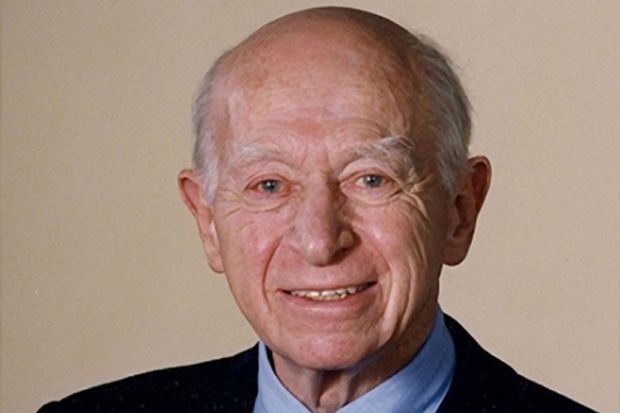Boris Magasanik was born in Kharkiv, Ukraine, on 19 December 1919 and grew up in Vienna, although his studies were cut short in 1938 by the Anschluss – the annexation of Austria into Nazi Germany – when all Jews were banned from universities.
He moved to the US to finish his degree at the City College of New York and, after spending much of the war in Europe in the army as a medical technician, went on to Columbia University for his PhD. He would always remain notable for his informed interest in many historical and cultural topics well beyond his core scientific concerns.
After completing his doctorate in 1948, Professor Magasanik began his career at Harvard Medical School. Although he spent more than a decade at Harvard, interrupted by a sabbatical at the Pasteur Institute in Paris under the Nobel laureate Jacques Monod, he eventually left his position as professor of bacteriology to join MIT. He would remain there for the rest of his long life, eventually as Jacques Monod professor emeritus of microbiology.
He was recruited to MIT by the acclaimed microbiologist Salvador Luria – who went on to share the 1969 Nobel Prize in Physiology or Medicine for his work on gene replication and viruses – to establish a strong presence for MIT in the then up-and-coming field of molecular biology.
Professor Magasanik proved highly effective in this role. The period he spent as head of the department of biology, from 1967 to 1977, was notable for expansion, a strong focus on molecular research and a bold appointments policy that made the department one of the most prominent in the US. Research excellence, however, was never at the expense of education, not least because Professor Magasanik was himself a committed and inspirational teacher into his nineties.
Although his own research focused on microbial physiology and the regulation of gene expression in yeast and bacteria, Professor Magasanik ranged widely across metabolic biochemistry, microbial genetics and molecular biology. Particularly significant was his work on how microbial cells respond to available nutrients. He was also the first to demonstrate the phenomenon of nitrogen regulation, showing how the behaviour of the bacterial genes responsible for the body’s assimilation of nitrogen is influenced by the levels of nitrogen in their environment.
Professor Magasanik died on Christmas Day and is survived by second wife, Helen Donis-Keller, and stepdaughter Christine.

